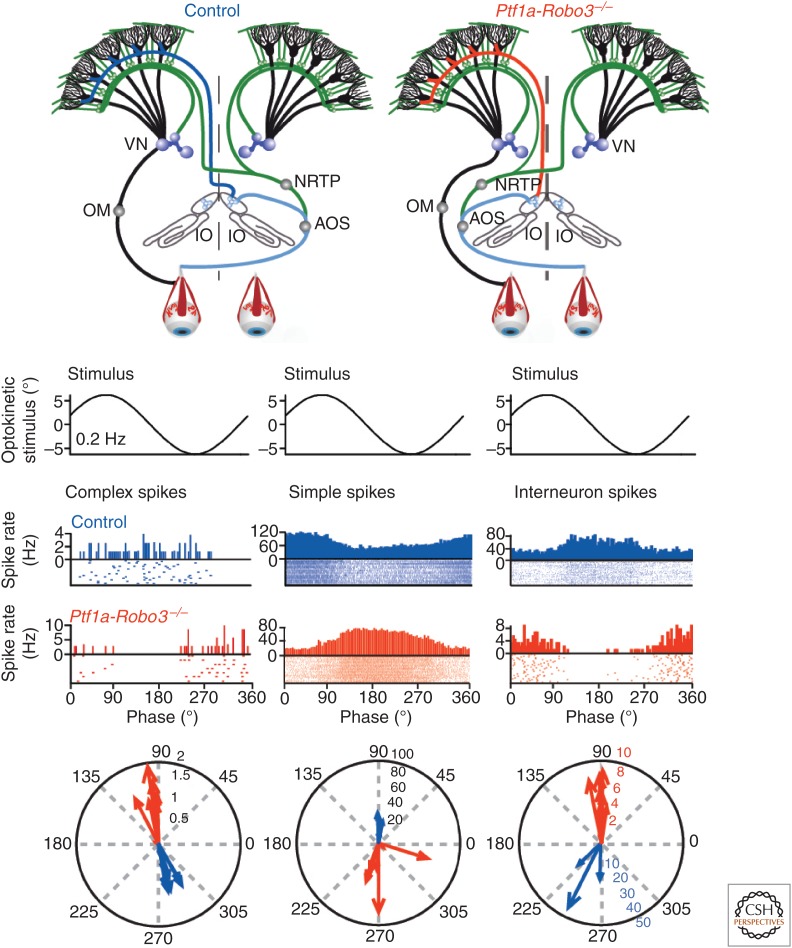Figure 5.
Climbing fibers dominate timing of simple spike firing. Although the complex spikes of Purkinje cells are modulated by activity in the climbing fiber system, the simple spikes are supposed to be largely driven by the mossy fiber system. The frequencies of these two types of spikes are often modulated reciprocally. An increase in complex spikes is associated with a decrease in simple spikes, and vice versa. This reciprocal firing is thought to be essential for motor behavior. Rerouting the climbing fiber system in Ptf1a-Robo3 mice from a contralateral (dark blue line in top panel) to a predominantly ipsilateral projection (red line in top panel) does not only reverse the modulation of complex spike activity during natural optokinetic stimulation (see peristimulus–time histograms (PSTHs), raster, and polar plots in left panel), but also that of the simple spike activity (middle panel). Because the laterality of the mossy fiber projection is unaffected (green lines in top panels), these data show that the proper timing of the climbing fiber input is essential for well-coordinated motor performance by controlling the timing of simple spike firing. The phase of molecular layer interneurons is also reversed in the mutants (right panel), which suggests that climbing fibers evoke their effects on simple spike activity via molecular layer interneurons. VN, Vestibular nuclei; NRTP, nucleus reticularis tegmenti pontis; OM, oculomotor neuron; IO, inferior olive; AOS, accessory optic system. (From Badura et al. 2013; modified, with permission, from the authors.)

